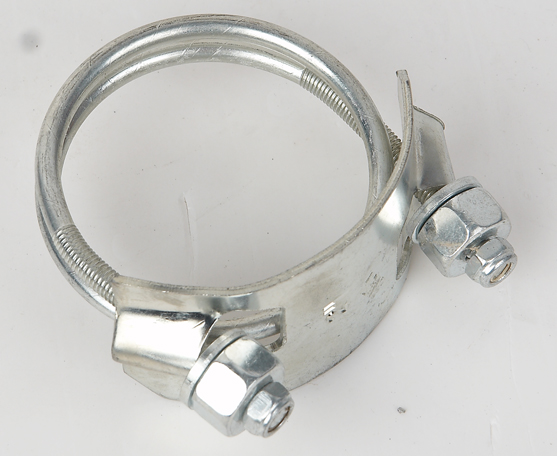When Should You Opt for a Spiral Clamp on Convoluted Hose
2025-11-11
For over two decades at Beideli, I’ve fielded countless questions from engineers and procurement specialists. One of the most common and critical questions we encounter is this: When does a convoluted hose application truly require a Spiral clamp? It’s not just about tightening a hose; it’s about ensuring integrity under pressure, vibration, and harsh conditions. A standard clamp might seem sufficient, but in demanding scenarios, it’s the Spiral clamp that often becomes the unsung hero, preventing leaks and catastrophic failures. Having seen what works and what fails in the field, I want to share a professional’s perspective on making this crucial decision.
What Exactly is a Spiral Clamp and How Does It Differ
Before we dive into the ‘when,’ let’s clarify the ‘what.’ A Spiral clamp isn't your everyday hose clamp. While a standard band clamp applies pressure in a single, continuous circle, a Spiral clamp is engineered differently. Its design features a spiral-wound band, which creates multiple, discrete pressure points along the circumference of the hose fitting. This isn't a minor detail; it's a fundamental engineering advantage. This multi-point pressure distribution is key to handling the unique challenges posed by a convoluted hose, whose surface is anything but smooth. The peaks and troughs of the hose create natural points for potential leakage that a standard clamp can miss.
Why Would a Convoluted Hose Demand a Specialized Clamp
Convoluted hoses are brilliant for flexibility and bend radius, but their uneven surface is their Achilles' heel. A standard clamp primarily contacts the crests of the convolutions. The troughs remain largely unsealed, creating potential leak paths. Furthermore, under system pulsation or thermal cycling, the hose can shift minutely. A standard clamp might loosen over time, but a Spiral clamp, with its multiple bite points, maintains a consistent and secure seal. From my experience, this is where the Beideli Spiral Clamp has consistently outperformed, providing a reliability that our clients in sectors like chemical processing and heavy machinery have come to depend on.
When is the Tipping Point for Choosing a Spiral Clamp
So, let’s get to the core question. You should seriously consider a Spiral clamp when your application checks one or more of the following boxes:
-
High-Pressure or Pulsating Systems: Does your system experience significant pressure spikes or constant pulsation? The spiral design resists loosening far better than a standard clamp.
-
Extreme Vibration Environments: Is the equipment mounted on engines, compressors, or other high-vibration machinery? The secure, multi-point grip is essential for maintaining a seal.
-
Critical Safety Applications: Can a failure lead to safety hazards, environmental issues, or massive downtime? Don’t compromise; the redundancy of a spiral design adds a vital layer of security.
-
Large Diameter Hoses: Are you dealing with hoses above 2 inches in diameter? Achieving uniform sealing force across a large diameter is notoriously difficult with standard clamps.
-
Challenging Media: Is the conveyed fluid or gas corrosive, abrasive, or at extreme temperatures? The robust sealing minimizes the risk of leaks of dangerous media.
What Technical Specifications Should You Scrutinize
As a professional, you need hard data. When evaluating a Spiral clamp, here are the non-negotiable parameters to examine. At Beideli, we ensure every clamp is documented with these precise specifications.
Key Parameters List:
-
Band Material: Typically 300 Series Stainless Steel (e.g., SS304, SS316) for corrosion resistance.
-
Housing Material: Must match or exceed the band's corrosion resistance.
-
Tensile Strength: The maximum tension the band can withstand before failure.
-
Torque Strength: The rotational force the housing and worm drive can endure.
-
Temperature Range: The minimum and maximum operating temperatures.
-
Pressure Rating: The maximum system pressure the clamped assembly is rated for.
Beideli Spiral Clamp Sample Specification Table
| Parameter | Specification | Notes |
|---|---|---|
| Material | AISI 304 / 316 Stainless Steel | Offers excellent resistance to corrosion and oxidation. |
| Band Width | 12mm / 16mm / 20mm | Wider bands for higher pressure and larger diameters. |
| Diameter Range | 15mm - 300mm | Covers a vast majority of industrial hose sizes. |
| Operating Temperature | -60°C to +300°C | Suitable for most high and low-temperature environments. |
| Tensile Strength | > 600 N/mm² | Ensures the band will not snap under high tension. |
| Surface Finish | Passivated | Enhances corrosion resistance by removing free iron. |
How Can the Right Clamp Impact Your Total Cost of Ownership
I always tell my clients to look beyond the initial unit price. A cheaper, standard clamp might save you a few cents today, but a single failure due to a leak can cost thousands in downtime, product loss, and environmental cleanup. The superior reliability of a Beideli Spiral Clamp directly contributes to a lower Total Cost of Ownership. It’s an investment in peace of mind and operational continuity. I’ve witnessed facilities eliminate recurring maintenance issues simply by switching to the correct clamping solution.
Are You Ready to Secure Your Convoluted Hose Connections
The question of when to use a spiral clamp boils down to risk management. If your application involves pressure, vibration, and consequences, the answer is clear. Don't let a minor component be the point of failure in your sophisticated system. We at Beideli have dedicated years to refining our clamping solutions for the most challenging industrial scenarios.
We are confident that our expertise and product quality can solve your sealing challenges. Contact us today with your specific application requirements. Let our team provide you with a tailored solution and a quote. Visit our website or reach out directly—we’re here to help you build safer, more reliable systems.





